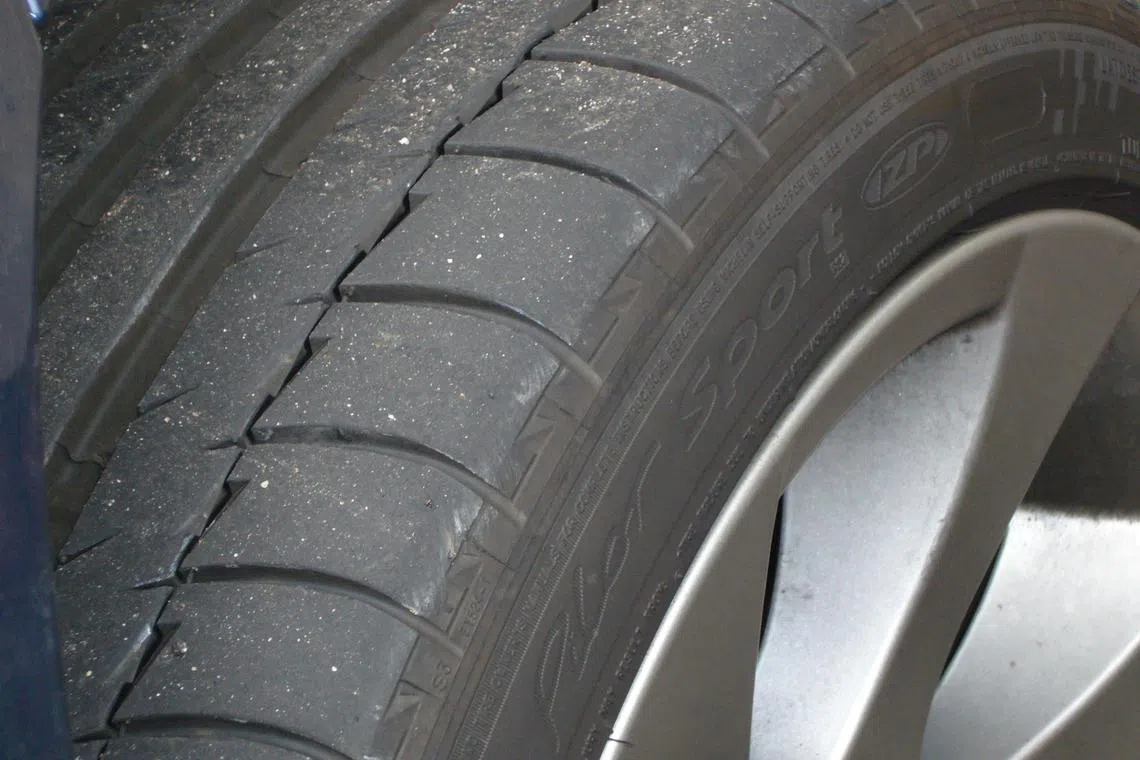Torque Shop: Tyre pressure monitoring system
Sign up now: Get ST's newsletters delivered to your inbox

Ensuring that the tyres are correctly inflated is important for safety and enhances the tyre's lifespan.
ST PHOTO: LEE NIAN TJOE
Follow topic:
How does the car know when a tyre’s pressure is low?
The tyre pressure monitoring system (TPMS) is a standard feature in cars today. In some countries, the TPMS is mandatory for all new cars sold.
Most motorists pay little attention to the condition of their tyres, especially the air pressure. Tyres lose air through natural gas diffusion through the rubber, or they can leak because of a faulty valve or a puncture.
The TPMS warning symbol lights up in the instrument cluster when there is a drop in air pressure in any tyre.
Using the ABS rotational speed sensor at each wheel, the TPMS is able to detect any relative difference in average rolling speed.
Whenever there is a loss of pressure in any tyre, its overall diameter and hence its circumference will be proportionally reduced. This means the wheel with lower air pressure will rotate marginally faster than one with the correct pressure. The system will identify the tyre and signal this to the TPMS as a fault.
Every time new tyres are fitted or inflated to the correct pressures, the system must be reset for the TPMS to base the evaluation on new reference values.
The more sophisticated TPMS uses individual pressure-sensitive devices mounted on the wheel. They transmit radio-frequency signals to individual receivers. These receivers then relay the digital information to the electronic control unit, which converts the signal to a readable pressure display for each tyre in either the metric pressure units – kPa (kilo Pascals) or the imperial psi (pounds per square inch).
Such direct pressure measuring systems can also be retrofitted. For these aftermarket versions, the pressure measuring device is typically fitted to the tyre valve. The controller and display unit, which will be mounted on the dashboard, needs to be calibrated to synchronise the sensor to the correct wheel.
They are relatively simple to initialise, but must be done every time the positions of the tyres are changed.
The advantage of this type of TPMS is that it displays the exact pressure value in real time, so the driver will know if the tyres are over- or under-inflated.

